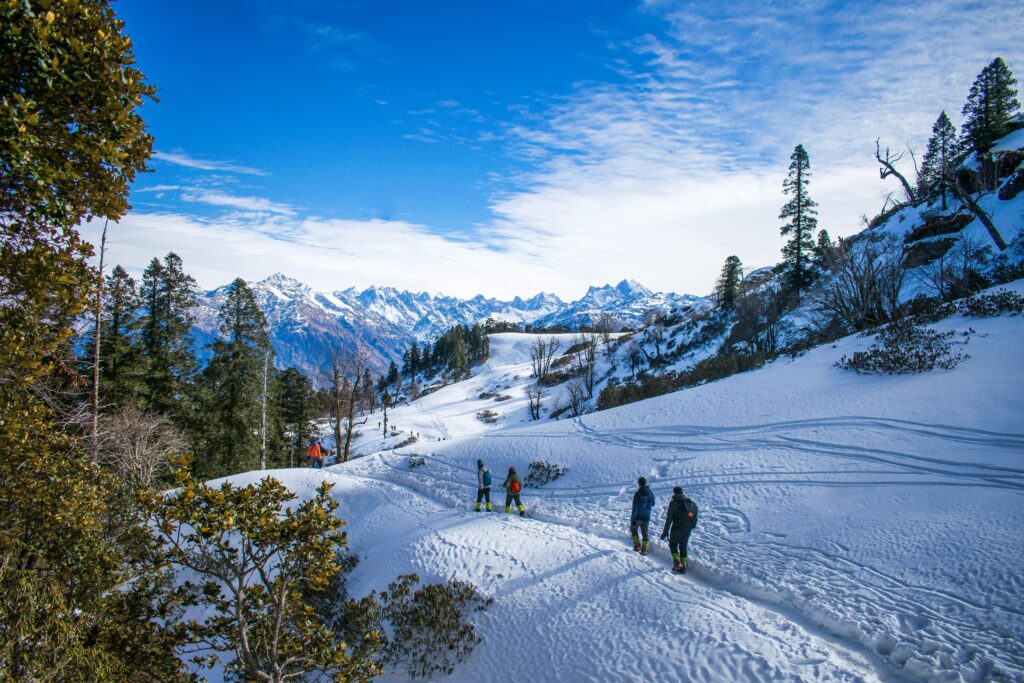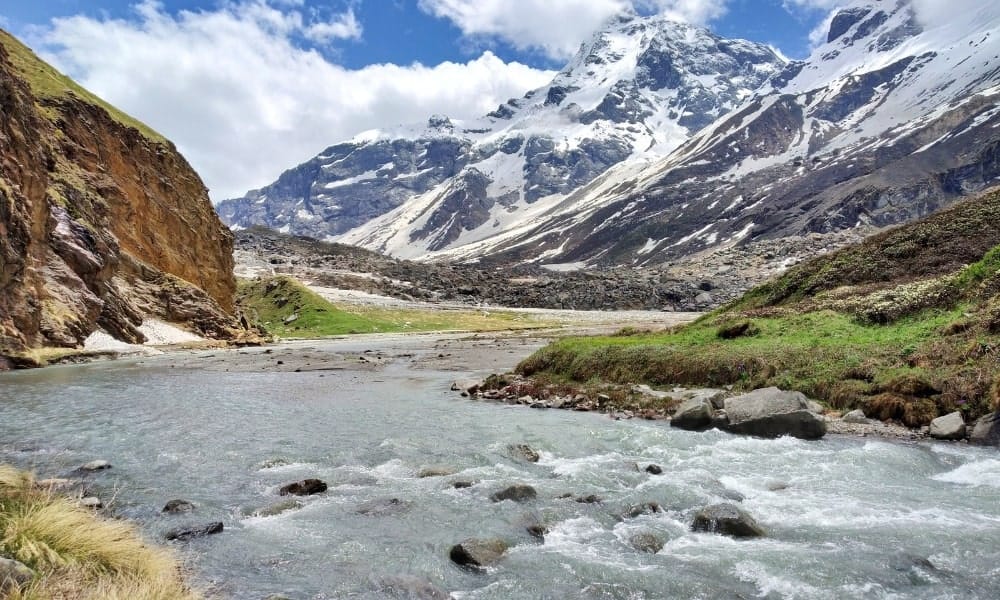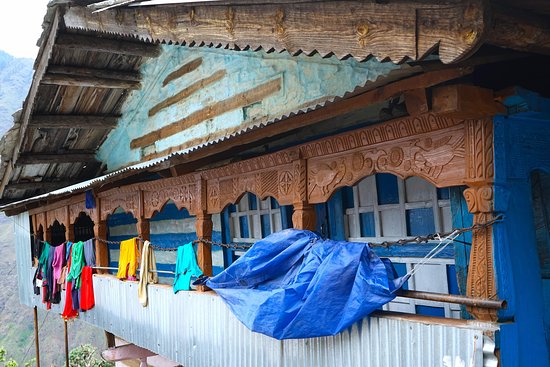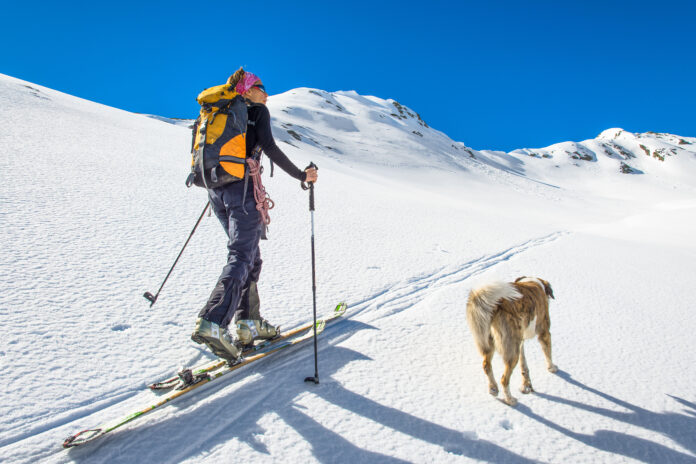Table of Contents
Introduction
Nestled in the heart of Uttarakhand, Kedarkantha trek winter adventure guide the Kedarkantha trek offers an enchanting winter trekking experience that feels straight out of a storybook. Known for its snow-clad trails, breathtaking views of the Himalayan peaks, and serene beauty, this trek is a perfect blend of adventure and tranquility.
Whether you’re a seasoned trekker or a beginner, Kedarkantha promises an unforgettable journey through dense pine forests, picturesque campsites, and the thrill of conquering a summit. Here’s everything you need to know about this magical adventure.

Why Choose the Kedarkantha Trek?
The Kedarkantha trek is one of the most sought-after winter treks in India, and for good reason. Located at an altitude of 12,500 feet, it provides a unique opportunity to experience the snow-covered Himalayas without requiring technical climbing skills. Here’s why it’s a must-do:
- Accessible Yet Challenging: The trek is beginner-friendly but still offers enough challenge to keep things exciting.
- Breathtaking Scenery: Panoramic views of snow-clad peaks like Swargarohini, Bandarpoonch, and Black Peak.
- Rich Flora and Fauna: Trek through Govind Wildlife Sanctuary, home to diverse wildlife and alpine flora.
- Scenic Campsites: Unique locations like Juda Ka Talab and the Kedarkantha Base Camp provide magical overnight experiences.
- Perfect for Winter: The trek is ideal from December to April, with guaranteed snow and surreal landscapes.
How to Reach Kedarkantha
- Flight: Nearest airport is Jolly Grant, Dehradun
- Train: Dehradun Railway Station is well connected
- By Road: Shared taxis or private cabs from Dehradun to Sankri (10 hrs)
Kedarkantha Trek: Cost & Logistics
| Item | Details |
|---|---|
| Duration | 4–5 days |
| Best Season | December to April |
| Difficulty | Easy to Moderate |
| Altitude | 12,500 ft |
| Trek Cost | ₹6,000 – ₹10,000 (depending on agency and inclusions) |
| Permits & Guide | Mandatory; included if booked through agencies |
| Starting Point | Sankri (reach via Dehradun) |
The Kedarkantha Trek Itinerary
Here’s a detailed breakdown of what you can expect during your adventure:

Day 1: Arrival at Sankri (6,400 ft)
- Journey: Drive from Dehradun to Sankri, approximately 200 km (7-8 hours).
- Experience: The journey to Sankri is an adventure in itself. The scenic drive takes you through lush green valleys, winding roads, and picturesque villages. Sankri, a quaint hamlet, serves as the base camp for the trek.
- Tip: Reach Dehradun a day before to acclimatize and explore this charming city.
- Stay: Overnight in guesthouses or homestays at Sankri.
Day 2: Trek from Sankri to Juda Ka Talab (9,100 ft)
- Distance: 4 km (4-5 hours).
- Highlights: The trail winds through dense pine forests, open meadows, and small water streams. Juda Ka Talab, a high-altitude lake, is a serene campsite surrounded by towering trees and snowy landscapes in winter.
- Stay: Campsite by the lake, surrounded by snow-laden trees.
Day 3: Trek to Kedarkantha Base Camp (11,250 ft)
- Distance: 4 km (3-4 hours).
- Highlights: The ascent becomes steeper as you approach the Kedarkantha Base Camp. The campsite offers stunning views of the Kedarkantha summit and surrounding peaks.
- Stay: Campsite under the starry Himalayan sky.
Day 4: Summit Day and Descent to Hargaon (12,500 ft)
- Distance: 6 km (7-8 hours).
- Highlights: Start early to conquer the summit before sunrise. The final climb is steep but manageable. From the top, take in the 360-degree panoramic views of the Himalayas.
- Stay: Campsite at Hargaon amidst lush pine trees.
Day 5: Descend to Sankri and Depart
- Distance: 6 km trek + 200 km drive to Dehradun.
- Highlights: The descent back to Sankri is a time to reflect on the journey and cherish the memories. From Sankri, head back to Dehradun.
Interesting Facts About the Kedarkantha Trek
- Mythological Significance: Legend has it that Lord Shiva meditated at Kedarkantha but had to abandon the spot due to disturbances.
- 360-Degree Views: The summit offers unparalleled views of over 13 Himalayan peaks.
- Frozen Lake: Juda Ka Talab, believed to be formed from the tears of Lord Shiva, freezes into a mirror-like surface in winter.
Essential Information
1. Difficulty Level:
Moderate. Suitable for beginners with decent fitness levels.
2. Best Time to Visit:
December to April for snow trekking. Spring months (March-April) offer a mix of snow and blooming flora.
3. Trekking Cost:
Approximately ₹8,000–₹12,000 per person, including meals, accommodation, and guide fees.
4. Fitness Preparation:
Start light cardio and strength training at least a month before the trek. Focus on building stamina and leg strength.
Must-Pack Essentials
- Clothing:
- Thermal wear, fleece jackets, and insulated jackets.
- Waterproof trekking pants and gloves.
- Footwear:
- Sturdy trekking shoes with good grip.
- Woolen socks and gaiters for snow.
- Gear:
- Trekking poles, headlamps, and a sturdy backpack.
- Sleeping bag and insulated water bottle.
- Other Essentials:
- Sunglasses (UV protection) and sunscreen.
- Personal medication and a basic first-aid kit.
Tips for First-Time Trekkers
- Acclimatize Well: Spend a day at Sankri to adjust to the altitude.
- Stay Hydrated: Even in cold weather, ensure you drink plenty of water.
- Pace Yourself: Don’t rush. The key to enjoying the trek is maintaining a steady pace.
- Respect Nature: Carry all waste back to base and avoid littering the trails.
Why Kedarkantha Is Perfect for Beginners
The Kedarkantha trek is beginner-friendly for several reasons:
- Gradual Ascents: Unlike many high-altitude treks, the trails here are gradual, allowing first-timers to adapt easily.
- Experienced Guides: Trek organizers ensure professional guidance and safety throughout.
- Short Duration: The trek lasts 4-5 days, making it less intimidating for novices.
Why Kedarkantha is Perfect for a Winter Trek
- Beginner-Friendly: Moderate difficulty, perfect for first-time trekkers.
- Stunning Snow Trails: Deep snow carpets from late December to March.
- Panoramic Summit Views: Few treks offer such expansive vistas in just 4 days.
- Rich Forest Trails: Oak, rhododendron, and pine forests feel like Narnia in winter.
- Cultural Touches: Sankri and nearby villages offer glimpses of local Garhwali life.
Beyond Trekking: Exploring Local Culture
The trek also offers a glimpse into the local lifestyle of Uttarakhand’s villagers. Sankri, the base village, is home to warm-hearted locals, traditional wooden houses, and rich Pahadi culture. Interact with the villagers to learn about their customs, food, and stories of living in the Himalayas.

Conclusion
The Kedarkantha trek is not just about reaching the summit—it’s about the journey, the people you meet, and the unforgettable moments along the way. Whether it’s the thrill of walking through snow-laden forests or the serenity of camping under a star-studded sky, this trek promises an experience that will stay with you forever.
So, if you’re looking to escape the mundane and dive into an adventure that combines natural beauty, cultural exploration, and personal accomplishment, the Kedarkantha trek is waiting for you. Pack your bags, lace up your trekking boots, and get ready to conquer the winter wonderland of Uttarakhand.
FAQ: Kedarkantha Winter Trek
1. Is Kedarkantha suitable for first-time trekkers?
Yes! Kedarkantha is one of the best beginner-friendly Himalayan treks. With a gradual incline and well-marked trails, it’s ideal for anyone with basic fitness and a passion for adventure.
2. When is the best time to trek Kedarkantha?
The best time is December to March when the trail is covered in snow, offering that perfect winter wonderland experience. For slightly easier conditions, April and November offer clear trails and moderate temperatures.
3. How cold does it get during the trek?
Temperatures can range from 0°C to -10°C at night, especially at higher camps. Daytime temperatures are more pleasant but still cold, so proper layering is essential.
4. How many kilometers is the Kedarkantha trek?
The total trek distance is approximately 20–23 kilometers, spread across 4 days. Daily walks range between 4 to 6 km, with the summit day being the longest and most challenging.
5. Do I need a guide or can I trek solo?
Guides are mandatory as per local regulations, especially in winter. Booking through a certified trekking organization ensures permits, safety, accommodation, and food are taken care of.

